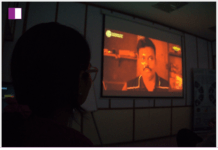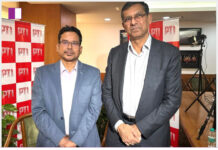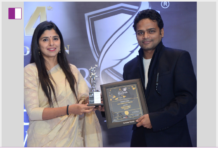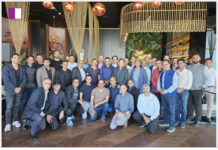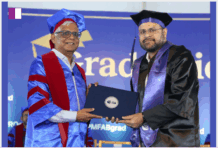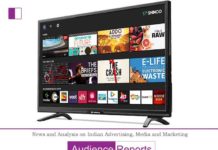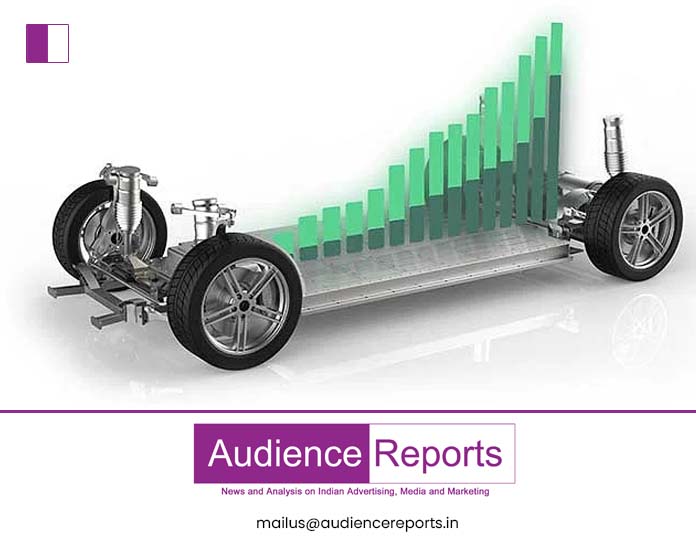EV brands have allocated most of their ad spends on digital channels like social media, search and display advertising; creating immersive experiences is also picking up, say industry players
Over the last four to five years, Indian consumers have evolved in their view of electric vehicles, as per industry reports. From an unachievable reality, it is now a go-to for many households, given the increasing awareness towards a clean Earth along with government initiatives towards the promotion of EVs.
According to a report by a market research company, IMARC Group, India’s electric vehicle market size reached $772 million in 2022. Looking forward, IMARC Group expects the market to reach $19,980 million by 2028, exhibiting a growth rate (CAGR) of 69% during 2023-2028. With fuel prices increasing and electric vehicle batteries getting cheaper, the rising population of India is leaning towards this cost-effective form of transport.
Auto brands have, hence, changed strategies to target their audience across India as the country gains traction in becoming a large consumer in the category.
Amit Dhawan, Partner & CEO, Art-E says, “The ad spend on electric vehicle (EV) marketing in India is expected to reach ₹20,000 crore ($260 million) in 2023, up from ₹12,000 crore ($160 million) in 2022. This growth is being driven by the increasing awareness of EVs and the government’s push to promote them. The majority of the ad spend is expected to be on digital channels, such as social media, search, and display advertising. This is because these channels are highly effective at reaching the target audience of EV buyers, which is typically young, urban, and affluent.”
With the pace at which EV’s popularity is increasing, marketing in this category has also evolved. Moving from just creating awareness, brands are now focusing on targeting and staying ahead of the competition, say observers. There has been a general shift in how marketers in the auto industry are approaching EV marketing.
What has changed?
Dev Arora, Co-founder & CEO of Alt Mobility, an EV leasing platform, says, “One of the key ways that marketing has evolved is through the use of social media and digital marketing. Companies are now using platforms such as Facebook, Twitter and Instagram to reach potential customers and promote their products. Additionally, they are using targeted advertising to reach specific demographics, such as the urban millennials who are more likely to be early adopters of new technology.
Another way that marketing has evolved is through the creation of specialized electric vehicle dealerships and showrooms. These locations are designed to provide a unique and immersive experience for customers, allowing them to learn about the technology and features of electric vehicles in a comfortable and non-intimidating environment.”
Speaking about transformation in EV marketing, Shilpa Sudhakaran, Vice President – Media, Interactive Avenues says, “The marketing of Electric Vehicles (EVs) in India has undergone a remarkable transformation, from product diversification to personalized targeting. Initially, the EV market mainly consisted of small cars and two-wheelers. However, as marketing strategies evolved, automakers diversified their EV offerings to include sedans, SUVs and commercial vehicles, thus catering to diverse customer preferences. Moreover, marketing has become more personalized by leveraging third-party signals to enhance communication and connect with the right audience effectively.”
Neeraj Bassi, Chief Growth Officer at Cheil India, tells us about how in the initial days EVs spoke to the environment-conscious audience, reminding them about the positive impact on the planet that a shift to EVs was going to bring. “ZSEV from MG Motors ran a very successful campaign with Benedict Cumberbatch urging the consumers to ‘change what they can’. The campaign struck the right chord with the audience and made MG ZSEV a dominant brand in its segment. Some brands are still talking about the sustainability aspect of an EV.
But with the rapid growth in the segment, marketers need to expand their target group to those who need to be convinced about the performance and capability of EV vehicles. Therefore, some brands have now started to talk about the differentiated experience that an EV offers. For example, Tata Nexon EV targeted the evaluators with it ‘From Oh to Woah’ campaign. In the campaign, a user introduces a non-user to the highlight features of the EV and the thrilling experience of the ride.”
Marketing mix for Indian audience
Dev Arora believes that for effectively reaching the audience in India, a combination of strategies and a well-crafted marketing mix is essential in the case of EVs. “Firstly, raising awareness about the benefits of EVs is crucial. Educational campaigns highlighting the environmental advantages, cost savings, and government incentives can be conducted through various channels, such as social media, television, and collaborations with environmental organizations. Additionally, leveraging the power of influencers and celebrities endorsing EVs can create a positive impact and attract attention.
In terms of the marketing mix, pricing plays a significant role. Offering competitive and affordable pricing for EVs, coupled with flexible financing options, can entice Indian consumers who are price-sensitive.”
Viren Razdan, Managing Director at Brand-nomics says, “While the category issues of battery life and charging stations are rapidly evolving, consumers are keenly expecting the ‘futuristic’ Technology to manifest in the design language of vehicles as well. On one end are the BYD, Hyundai and MG ( amongst others) and on the other the desire-driven iX BMW (and others). The latest salvo from MG the Comet is a great example of the shape of things to come, as each segment would have sharply defined positioning for the TG and its relevant proposition. Comet’s young cool hip style assumes the electric advantage and a unique styling seems spot on in terms of positioning.
While the category picks up heat, much would be required to pull up the laggards with confidence-building marketing, whether it’s charging stations or allaying fears about battery life. Conversion rates to EV are highly optimistic and India being one among the world’s top three markets, marketing would play a key role to buck the trend.”
Neeraj Bassi explains that while the category has expanded from an environment-conscious audience to those considering EV, there is still a large set of fence-sitters who are engaged by the category, but are hesitant to make a move towards an EV. “The next set of growth in the category would come from converting these fence-sitters into believers. And this would be a challenging task, because unlike the previous set, this audience is already aware of the benefits of an EV. So, the challenge for communication would be less about creating awareness and more about inspiring confidence.”








